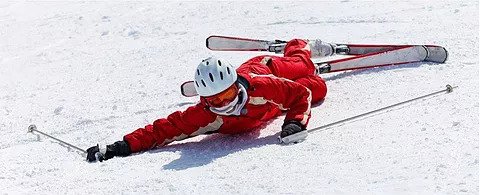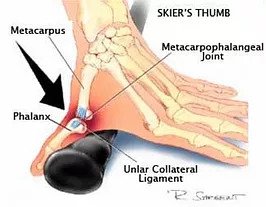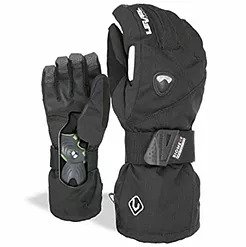
New to snowboarding? Look after your wrists by Tanaya Sarkhel
Hand and wrist expert Tanaya Sarkhel highlights the most common wrist injuries suffered by snow boarders and how to avoid them.
As the ski season approaches, it’s a good time to think about preparation and kit for the holidays ahead. Snowboarding is a terrific sport and can come more intuitively than skiing, but learning can be a bruising experience and you don’t want to come home with a souvenir plaster cast!
Having your feet effectively tied together means there are really only two ways to fall: backwards and your bum cushions the blow, forwards and your wrists are at risk of taking the impact. We are happier to protect our heads on the slopes as helmets have become so popular after a succession of high-profile accidents, but wrist guards are important kit too. They can be hired along with the rest of your gear but my observation is that rental guards are bulky and though they do an excellent job they can be cumbersome to wear and make it difficult to keep your hand warm. There is a wide range of gloves with built-in protection that would be worth investing in before you leave home.

Potential Injuries
Falling on the outstretched hand can put a number of structures at risk and it’s down to luck really which one gives under the forces applied. The bone at most frequent risk of injury is the scaphoid bone, sitting under the base of the thumb. Usually broken bones are accompanied with pain, swelling, bruising and a loss of movement but because this little bone is sealed within the wrist joint, all of these symptoms may improve after a couple of week and some function return. It is also difficult to see on X-rays and it may take a couple of weeks to become obvious. If you fall and have persistent pain at the base of your thumb, particularly on gripping things hard or pushing off on that hand, repeat X-rays or a CT scan will help to rule this out as a possible injury. The scaphoid, when broken, is one of the most difficult bones in the body to get to heal, and requires at the very least a plaster cast for 8-12 weeks or a procedure to screw it together to reduce the uncertainty of it healing.

Another structure at risk is the scapho-lunate ligament which holds the scaphoid bone next to its neighbour the lunate. This injury is another which may settle quite quickly after the original fall and may be considered a sprain but if down the line you are unable to push off on that hand, or do press-ups where you could before, or struggle with a twist grip such as when opening a heavy door, this tear could be the culprit. The ligament doesn’t usually heal by itself and if the two bones are left not talking to each they can drift apart, with the potential to go on to a post-traumatic arthritis that’s quite difficult to treat. An MRI and sometimes key-hole surgery helps to check the ligament integrity out and plan what options might be available to get good function back.

Skier’s thumb is associated with a fall while holding the ski pole, but it can happen falling over onto the open hand. The force applied to the thumb ruptures the ligament on one side of the joint, the ulnar collateral ligament and is associated with bruising, swelling and pain. There are some circumstances where as a result of the energy involved in the injury, the torn ligament flips back on itself, away from its home and will be unable to heal well even if in a splint. This situation is known as a Stener lesion and can be identified with an ultrasound scan. If there is no Stener lesion, a plaster cast will help support the injury until healing takes place. If there IS a Stener lesion, this is where surgery is required to straighten things out and reattach the ligament to restore the power of pinch and key grip.

Enjoy the snow and reduce your risks but if you’ve taken some falls and your wrists and hands don’t feel quite right, it’s straightforward to check things out and support your rehabilitation.



